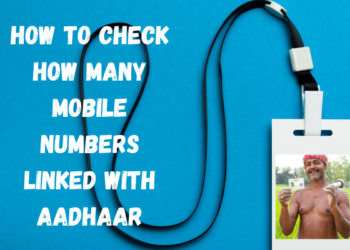In today’s ever-changing world, it is more important than ever to have a strong education. However, the traditional education system is not always able to keep up with the pace of change. This is where blockchain-based digital credentials come in.
Blockchain is a distributed ledger technology that can be used to create tamper-proof and secure records of digital assets. This makes it an ideal solution for storing and verifying educational credentials.
How Blockchain-Based Digital Credentials Work
Blockchain-based digital credentials work by storing information about a student’s educational achievements in a secure and tamper-proof manner. This information can include things like transcripts, certifications, and other academic records.
When a student completes an educational program, the institution that issued the program can create a digital credential for the student. This credential is then stored on the blockchain, where it can be easily accessed and verified by anyone.
Benefits to Using Blockchain Based Digital Credentials in Education
There are a number of benefits to using digital credentials blockchain in education.
First, they are much more secure than traditional paper-based credentials. This is because blockchain is a decentralized system, which means that there is no single point of failure. If a hacker were to try to alter a blockchain-based credential, it would be immediately evident to everyone on the network.
Second, blockchain-based digital credentials are much more efficient than traditional paper-based credentials. This is because they can be easily shared and verified electronically. This can save time and money for both students and institutions.
Finally, blockchain-based digital credentials can help to improve the transparency of the education system. This is because they can be easily tracked and verified. This can help to ensure that students are getting the education they deserve.
How to use Digital Credentials in Education
There are a number of different ways that blockchain-based digital credentials can be used in education. For example, they can be used to store transcripts, certifications, and other academic records. They can also be used to track student progress and learning outcomes.
Blockchain-based digital credentials have the potential to revolutionize the education system. They can make education more secure, efficient, and transparent. As the technology continues to develop, it is likely that blockchain will play an increasingly important role in education.
Here are some of the benefits of using blockchain-based digital credentials in education:
- Security: Blockchain is a secure and tamper-proof technology, which makes it ideal for storing sensitive data such as educational credentials.
- Efficiency: Blockchain can help to streamline the process of issuing, verifying, and sharing educational credentials. This can save time and money for both students and institutions.
- Transparency: Blockchain can help to increase transparency in the education system by making it easier to track and verify educational credentials. This can help to ensure that students are getting the education they deserve.
Here are some of the ways that blockchain-based digital credentials are being used in education today:
- Storing transcripts: Blockchain can be used to store transcripts and other academic records in a secure and tamper-proof manner. This can make it easier for students to transfer credits between institutions and to apply for jobs.
- Tracking student progress: Blockchain can be used to track student progress and learning outcomes. This information can be used to provide personalized learning experiences and to identify students who may need additional support.
- Verifying credentials: Blockchain can be used to verify educational credentials. This can help to prevent fraud and to ensure that employers are hiring qualified candidates.
The future of blockchain-based digital credentials in education is bright. As the technology continues to develop, it is likely that blockchain will play an increasingly important role in the education system.
Blockchain has the potential to revolutionize the education system by making it more secure, efficient, and transparent. By using blockchain-based digital credentials, students can be confident that their credentials are secure and tamper-proof. Institutions can streamline the process of issuing, verifying, and sharing credentials, which can save time and money. And employers can be confident that they are hiring qualified candidates.
Blockchain is a powerful technology that has the potential to change the world. And education is no exception.
Challenges of Blockchain-Based Digital Credentials
While there are many benefits to using blockchain-based digital credentials in education, there are also some challenges that need to be addressed. These challenges include:
- Cost: The cost of implementing blockchain-based digital credentials can be a barrier for some institutions.
- Complexity: Blockchain is a complex technology, and it can be difficult for some institutions to implement and manage a blockchain-based digital credentials system.
- Acceptance: There is still some uncertainty about the acceptance of blockchain-based digital credentials by employers and other stakeholders.
Conclusion
Despite the challenges, blockchain-based digital credentials have the potential to revolutionize the education system. By making education more secure, efficient, and transparent, blockchain can help to improve the quality of education for all students.
As the technology continues to develop, it is likely that blockchain will play an increasingly important role in education. In the future, it is possible that blockchain-based digital credentials will become the standard way to store and verify educational credentials.







